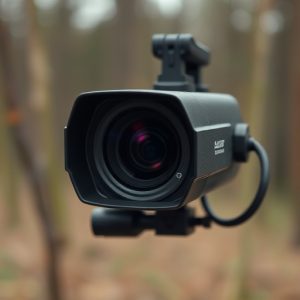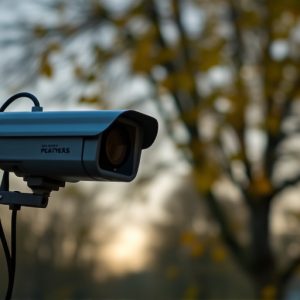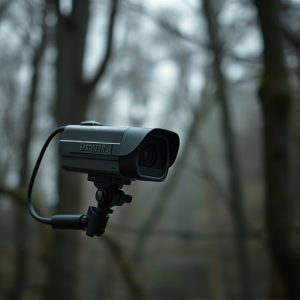Detecting Hidden Cameras: RF Guide for Home and Office Security
Covert cameras disguised as everyday items pose a dilemma in home offices, offering security benefit…….
Covert cameras disguised as everyday items pose a dilemma in home offices, offering security benefits but invading privacy. RF detection is a powerful tool to uncover these hidden cameras, scanning for electronic signals. A multi-layered approach, including visual inspections, smart home upgrades, access control, and regular maintenance of RF detection systems, ensures a secure home office environment against covert surveillance.
Uncover the insidious world of hidden cameras with our comprehensive guide on detecting covert cameras using radio frequency (RF) technology. In today’s digital age, privacy is paramount, especially in homes and offices where Covert Cameras pose a significant threat. This article equips you with essential knowledge about these clandestine devices and their detection methods. From understanding the science behind RF detection to practical steps for identifying hidden cameras, learn how to fortify your spaces against surreptitious surveillance.
- Understanding Covert Cameras and Their Uses
- The Science Behind Radio Frequency Detection
- Practical Steps to Detect Hidden Cameras Using RF Technology
- Prevention and Mitigation Strategies for Home and Office Security
Understanding Covert Cameras and Their Uses
Hidden or covert cameras have evolved beyond their mere association with surveillance and security, particularly in the context of modern workspaces and homes. These devices are now designed to be discreet, often built into everyday objects like pens, clocks, and even light switches, making them nearly impossible to detect without specialized equipment. In the digital age, where privacy concerns are on the rise, understanding the capabilities and uses of covert cameras has become essential for both individuals and organizations.
For instance, in a home office setting, covert cameras can serve multiple purposes. They can enhance security by deterring potential intruders or monitoring remote employees’ activities to ensure productivity and data protection. However, their use raises ethical considerations regarding privacy, especially when not disclosed to all occupants. This highlights the importance of striking a balance between security measures and respect for personal space in both public and private settings.
The Science Behind Radio Frequency Detection
Radio frequency (RF) detection is a powerful tool in the quest to uncover hidden cameras, especially those used for covert surveillance in homes or offices. The science behind it involves understanding that many electronic devices, including hidden cameras, emit or receive radio signals as part of their operation. These signals can be detected and analyzed to identify the presence of such devices.
RF detection technology works by scanning a specific frequency range known to be associated with covert camera transmissions. This process involves advanced equipment capable of picking up weak signals that might otherwise go unnoticed. By targeting the unique RF signatures of hidden cameras, security professionals can locate and neutralize these devices, ensuring privacy and security in sensitive environments like home offices.
Practical Steps to Detect Hidden Cameras Using RF Technology
Detecting hidden cameras using radio frequency (RF) technology is a practical and effective method to ensure privacy in your home or office. The first step involves identifying potential locations where covert cameras might be installed. This includes checking areas with limited visibility, such as corners, behind furniture, or near ceiling panels. RF detectors can then be used to scan these areas for any electronic signals that may indicate the presence of a camera.
For homes and offices, investing in an RF detector with multiple frequency bands is advisable. These devices can pick up on various types of hidden cameras operating on different frequencies, making it easier to identify and locate them. During the scanning process, keep an eye out for any sudden spikes or unusual signals, as these could point to active covert cameras. Regular checks and maintenance of your security system using RF technology will help maintain a safe and secure environment, free from prying eyes.
Prevention and Mitigation Strategies for Home and Office Security
Preventing and mitigating the presence of covert cameras in homes and offices is a multifaceted approach that involves understanding common placement areas, regular checks, and utilizing technology. In residential settings, homeowners can enhance security by conducting periodic visual inspections of potential hidden camera locations such as corners, ceilings, and behind furniture. Upgrading old fixtures with newer models that do not have ports for external cameras and using privacy-focused smart home devices designed to obscure or block signal transmission can also deter installation.
In offices, implementing strict access control policies, regular equipment audits, and installing detection systems specialized in radio frequency (RF) signals can significantly reduce the risk of covert surveillance. Security personnel should be trained to identify suspicious devices or modifications to office equipment. Moreover, employing RF jammers temporarily during sensitive meetings or events can prevent unauthorized cameras from transmitting data.
Hidden cameras, though sophisticated, can be detected using radio frequency (RF) technology. By understanding the science behind RF detection and implementing practical steps, individuals can safeguard their homes and offices from covert surveillance. It’s crucial to stay informed about these methods to protect privacy in today’s digital era. Additionally, adopting prevention strategies is key to mitigating risks associated with hidden cameras for both personal and professional spaces.


